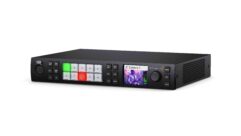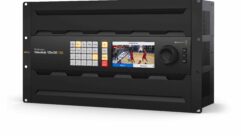How the Vicious Circle of Falling Behind Can Cripple Your Cash Flow
Mar 26, 2012 4:59 PM
Your relationship with your vendor is impacted by your payment performance. Good customers will receive better benefits in the form of a higher level of service and better pricing.
The alternative? Falling behind on payments can cause you to lose out on discounts and priority service, which negatively impacts your cash flow, and may put you in a position to fall even further behind on payments. That’s right – it’s a vicious circle.
Sticking to a few key principles when managing vendor payments can help keep your business out of this self-perpetuating rut.
Invest in an Automated Purchasing System
By automating your purchasing system you are streamlining the process of payables and inventory. It provides current information to project management, estimating and accounting, and reduces the amount of mistakes all around.
An automated purchasing system provides the ability to measure committed funds.
It allows for cross-checking of pricing between the purchase order and the invoice pricing.
Once an invoice is received in the system it is recorded as a payable and is reported on a payable aging. The payable aging report helps in anticipating the cash outflows.
An automated purchasing system can also help maintain the right level of inventory, which can have a significant impact on your cash flow. Aim to keep the lowest possible level of inventory on-hand that still allows you to run your business. Excess inventory drops in price while it sits on your shelves and ties up capital that could be better used elsewhere.
Set Up Payment Cycles
Establish a process for paying invoices. A set process is easy to communicate and lets suppliers know when payments will be processed.
Stick to a set schedule for making payments – either on a weekly basis or on the same date each month.
Use an accounts payable journal or accounts payable aging report to manage your bills and pay them on time.
Determine the cost of producing a single check. Knowing this will help minimize your processing costs. It’s cheaper to cut one check to a vendor to cover multiple invoices than paying each invoice separately.
Take Advantage of Prompt-Pay Discounts
If you know you’ll be in a period of positive cash flow, take advantage of any discounts your vendors may offer for prompt payment.
A possible exception to this rule would be in cases when your supplier offers payment terms beyond 30 days. Compare the discount against the interest rate charged to borrow money from your bank. If the interest rate for borrowing is higher than the annualized interest rate earned by taking the discount, then you shouldn’t take the discount.
In general, always take advantage of prompt-pay discounts when the vendor requires full payment within 30 days.
Additionally, set up prompt pay discounts as a separate account on your income statement so you can track how much you save in a year by taking the discounts.
When your payments are late, vendors will make it harder for you to do business with them. Falling behind can create more work, more expenses, less productivity and less profit. But taking these three steps can help streamline your payables processes and positively impact your cash flow.
Ready to dig even deeper into cash flow management? Get the full rundown in the CEDIA University course ESB301: Cash Flow Strategies to Boost Your Bottom Line, available for purchase through the CEDIA University Courseware Marketplace as an e-book or paperback.
CEDIA is also hosting a Cash Flow Strategies webinar on May 2 in partnership with ADI. Visit www.cedia.org/calendar to learn more.










